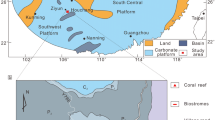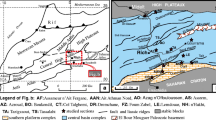Abstract
Coral communities were investigated in the northern Red Sea, in the Gulfs of Suez and Aqaba, for their framework building potential. Five types of coral frameworks were differentiated: Acropora reef framework, Porites reef framework, Porites carpet, faviid carpet, and Stylophora carpet. Two non-framework community types were found: the Stylophora-Acropora community, and soft coral communities. Reef frameworks show a clear ecological zonation along depth and hydrodynamic exposure gradients, with clear indicator communities for each zone. By definition, coral carpets build a framework but lack distinct zonation patterns since they grow only in areas without pronounced gradients. In the northern Red Sea they show a gradual change with depth from Porites to faviid dominance. A Stylophora carpet is restricted to shallow water in the northern Gulf of Suez. Although growth rates of carpets may be somewhat less than those of reefs, the carbonate accumulation is considered to be higher in carpet areas due to their significantly higher areal extension. In addition, reefs and carpets have different sediment retention characteristics – the carpet retains, the reef exports. The in situ fossilization potential of coral carpets is expected to be higher than that of reef frameworks.
Similar content being viewed by others
Author information
Authors and Affiliations
Additional information
Accepted: 25 May 1999
Rights and permissions
About this article
Cite this article
Riegl, B., Piller, W. Coral frameworks revisited–reefs and coral carpets in the northern Red Sea. Coral Reefs 18, 241–253 (1999). https://doi.org/10.1007/s003380050188
Issue Date:
DOI: https://doi.org/10.1007/s003380050188




